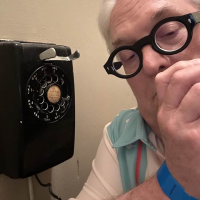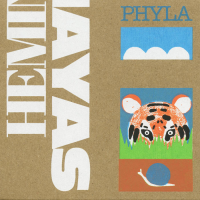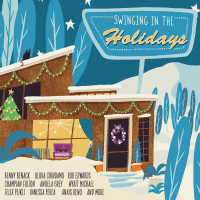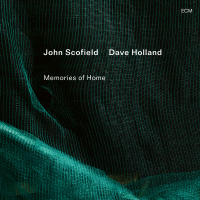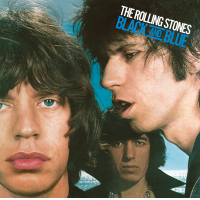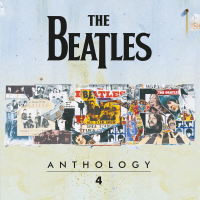Home » Jazz Articles » Extended Analysis » Wynton Kelly Trio with Wes Montgomery: Wynton Kelly Trio...
Wynton Kelly Trio with Wes Montgomery: Wynton Kelly Trio with Wes Montgomery - Smokin' At The Half Note
Smokin' At The Half Note
Verve 829578
1965
The late jazz guitarist Emily Remler once said that lurking inside her middle-class Jewish body was a black man with a fat right thumb. That black man with a fat thumb was Wes Montgomery. Born John Leslie Montgomery in Indianapolis, Indiana on March 6, 1925, Montgomery took the better part of his short life to become an overnight success. He began to teach himself to play guitar when he was 18 years old. Fairly unorthodox, Montgomery learned to play the guitar with his thumb as opposed to using a pick or plectrum. The effect was similar to the result of Ty Cobb's crazy bat grip: lack or orthodoxy did not inhibit in any way the genius that resulted. Montgomery began touring with Lionel Hampton's band in the late 1940s before returning to Indianapolis and a decade of obscurity. In 1957, Montgomery formed a band with vibraphonist brother Buddy Montgomery and bassist Monk. Together, the brothers recorded Fingerpickin' (Pacific Jazz 37987, 1957). After minimal personnel changes, Montgomery and company waxed their first disc in 1959 for Riverside, A Dynamic New Sound (Riverside/OJC OJCCD-034-02). A year later, Montgomery released The Incredible Jazz Guitar of Wes Montgomery (Riverside/OJC OJCCD -036-02) and that record made him famous.
Between his maiden voyage in 1957 and his premature death at 42 in 1968, Montgomery recorded scores or albums for Pacific Jazz, Milestone, Riverside, Verve, and A&M. During the middle of his tenure at Verve, before following producer Creed Taylor to A&M and commercial oblivion, Montgomery joined the Wynton Kelly Trio (rounded out with Paul Chambers and Jimmy Cobb, Miles Davis famous pre-Kind of Blue rhythm Section) and recorded live at New York City's Half Note. The five pieces finally included on the disc were described by guitarist Pat Metheny as ..."the absolute greatest jazz guitar album ever made." That is pretty heavy.
The music on this album is timeless. That is to say that it has held up every well considering it was made in the mid-1960, a period when many jazz musicians were forced by record companies and economics to record the popular music of the day. The disc opens with Miles' "No Blues" from the Trumpeter's transitional period between his two great quintets. This is followed by Tadd Dameron's "If You Could See Me Now," complete with its extended Wynton Kelly Introduction. Montgomery's ballad playing is in the same category as his blues—outstanding. Hank Jones's "Unit Seven" contains perhaps the most cogent jazz thinking since Sonny Rollins's "Blue Seven." this disc is closed out with Montgomery's own "Four on Six" and he again turns his attention to the ballad with "What's New."
Two things make Wes Montgomery's guitar playing unique. The use of that "fat thumb" made Montgomery's tone round and broad, with a slightly damped presentation. The second thing was his use of octaves, a characteristic that makes his music immediately recognizable and provided George Benson a good living. With these tools, Wes Montgomery added a unique voice to the jazz chorus while straddling different genres and periods. Smokin' at the Half Note is his most profound live testament.
The complete Half Note performance may be found on Wes Montgomery—Impressions: The Verve Jazz Sides (Verve 521690, 1995).
The Ten Best Live Jazz Recordings
 #1 At The Village Vanguard Bill Evans Trio (1961)  #6 At The Village Vanguard Sonny Rollins (1957) |  #2 At The Village Vanguard John Coltrane (1961)  #7 At Birdland John Coltrane (1963) |  #3 At The Plugged Nickel Miles Davis (1965)  #8 Smokin' At The Half Note Wynton Kelly (1965) |  #4 At Antibes Charles Mingus (1960)  #9 Concert By The Sea Errol Garner (1955) |  #5 At Newport 1956 Duke Ellington (1956)  #10 At Massey Hall The Quintet (1953) |
#11 -The Best of the Rest ...
Personnel
Album information
Title: Wynton Kelly Trio with Wes Montgomery - Smokin' At The Half Note | Year Released: 2005 | Record Label: Verve Music Group
Tags
PREVIOUS / NEXT
Support All About Jazz
 All About Jazz has been a pillar of jazz since 1995, championing it as an art form and, more importantly, supporting the musicians who make it. Our enduring commitment has made "AAJ" one of the most culturally important websites of its kind, read by hundreds of thousands of fans, musicians and industry figures every month.
All About Jazz has been a pillar of jazz since 1995, championing it as an art form and, more importantly, supporting the musicians who make it. Our enduring commitment has made "AAJ" one of the most culturally important websites of its kind, read by hundreds of thousands of fans, musicians and industry figures every month.

